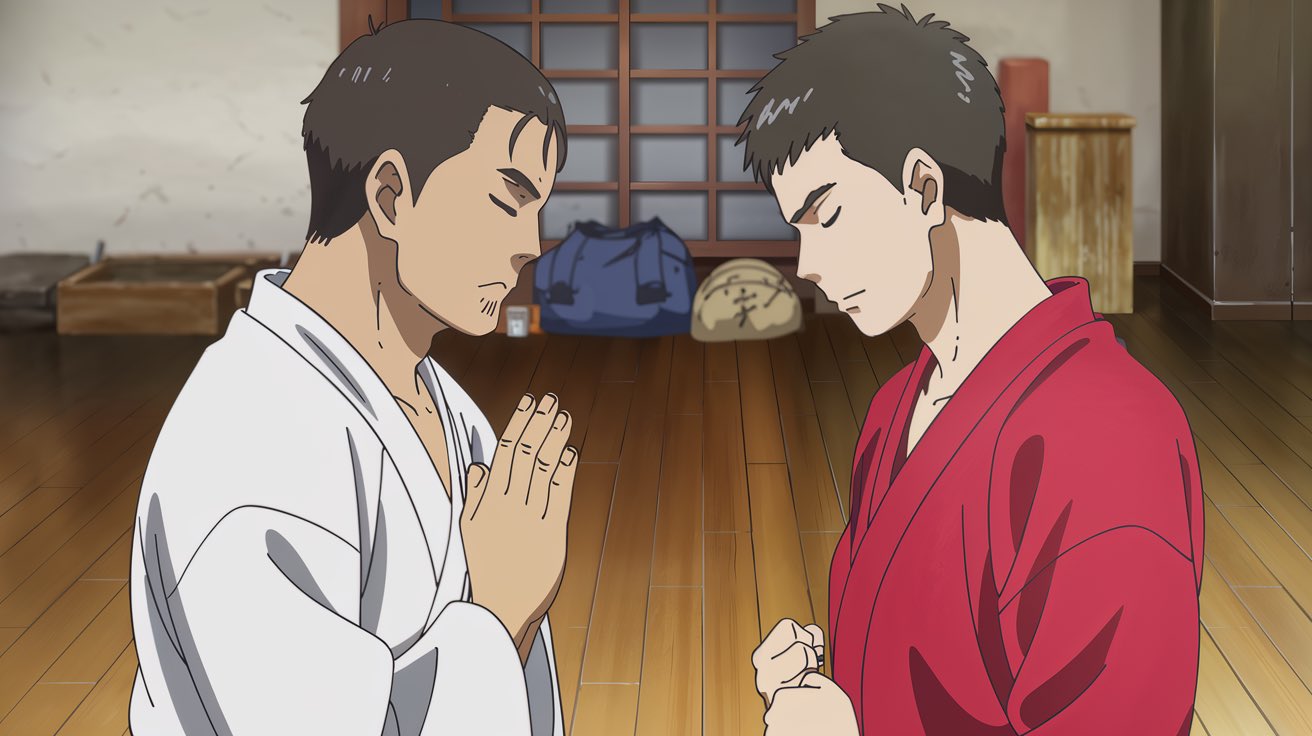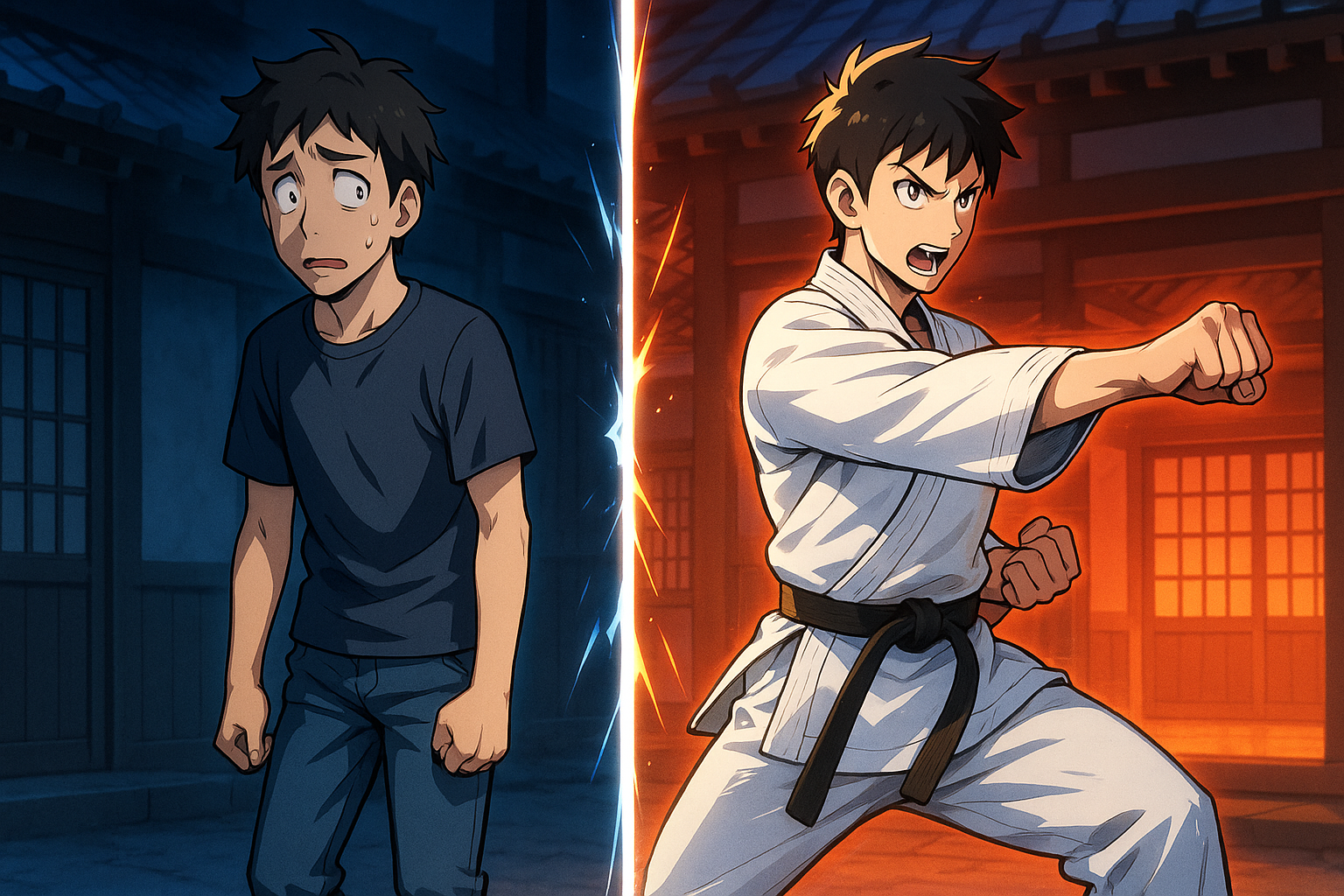Unraveling the Mystery: 7 Key Differences Between Okinawan Karate and Japanese Karate Shotokan
Shotokan is the pen name of Gichin Funakoshi. Which he named as his style of karate.
But where did he bring it from? Okinawa.
Which means, if you think you know Shotokan Karate? Think again. Most people don’t realise there are actually two distinct versions: Okinawan ryukyu islands and Japanese Shotokan. Martial Arts with a common root but huge differences.
In this article, I’m breaking down exactly what sets them apart and why it matters big time for your training. Whether you’re a black belt or just starting out, this deep dive into the origins of Shotokan is gonna change how you see everything. Get ready – you’re about to unlock some serious karate secrets most people have no clue about!
1. The Historical Divide: Roots and Evolution of Japanese Karate & Okinawan Karate
Let’s turn back the clock for a sec. To really get the difference between Okinawan and Japanese Shotokan, you need to know where it all started. Okinawan Shōrei-ryū and Shōrin-ryū? That’s the OG. Both Okinawan styles, where karate was born as a way to defend yourself when weapons were banned. People trained in secret, and it was all about staying alive in a fight.
Now, Japanese Shotokan? That’s what happened when Gichin Funakoshi brought karate to Japan in the 1920s. He tweaked it, adding in discipline, etiquette, and a whole lot of philosophy to match the Japanese way of life.
The big difference? Okinawan styles are closer to the raw, combat-focused roots, while Japanese Shotokan is more about formal training, discipline, and respect.
2. Training Focus In Karate Style: Practical Application vs. Aesthetic Form
Here’s the deal—Okinawan and Japanese Shotokan have some major differences, and it all comes down to what they focus on during training:
- Okinawan karate is all about real-world self-defense. It’s close-range, hard-hitting, and designed to give you that knockout power when you need it.
- Japanese Shotokan? It’s more about perfecting your form to maximise speed and power. It added in a longer range – possibly influenced by kendo kumite. Think long-range, smooth, and making every technique end the fight.
Why the split? Simple. Okinawan style karate grew from up close self defence, while Japanese Shotokan evolved in a more structured, ikken hissatsu approach.
3. Kata Interpretation: The Key Differences Between Okinawan & Japanese Karate Styles
Alright, let’s talk kata—those pre-arranged forms you see in karate training. But here’s the twist: Okinawan and Japanese Shotokan look at them totally differently:
- Okinawan styles like shito-ryu and goju-ryu sees kata like a treasure map. Inside every move, there are hidden techniques (called bunkai), and the goal is to figure out how each movement works in a real fight.
- Japanese Shotokan, on the other hand, is all about the power and precision of the performance. It’s more linear, with less focus on finding those hidden moves.
Why the difference? Simple. Karate in Okinawa is still about close range self defence, while Japanese Shotokan leans more toward speed, power & dynamic use of distance (maai).
By the way. If you’re looking for joint locks, throws, even how to grapple. It’s all in the kata. You just have to explore.
4. Stances and Footwork in Okinawan Karate Styles: Adaptability vs. Stability
Here’s a big difference between Okinawan and Japanese style karate—how they move and position themselves:
- Okinawa karate? It’s all about quick transitions with higher stances that let you stay light on your feet and adapt fast in close combat.
- Japanese Shotokan, though, loves those deep, powerful stances. It gives you a rock-solid base to generate maximum force with every technique. This is for basic training though. In sparring, the stances are more natural & fluid with the ability to drive forward, covering large distances, to close the gap on your opponent.
Why the difference? Okinawan focuses on close-range defense, while Japanese Shotokan is built for more long, medium and close range to deal with multiple opponents.
5. Breathing and Power Generation: Internal vs. External in Okinawan and Japanese Karate
How these two styles generate power? Totally different game.
- Okinawan Ryu uses something called “chinkuchi”, which is all about releasing full-body power in a quick, explosive way—kinda like Bruce Lee’s famous one-inch punch. It’s subtle but deadly, relying on efficient body mechanics and breath control.
- Japanese Shotokan, though, uses “kime”, —that momentary tensing of muscles right at impact to transfer all the power in one big hit. Plus compression, expansion & rotation to maximise the amount of power your body can generate into a strike.
Bottom line: Both pack serious power, but Okinawan looks more under the radar, while Japanese Shotokan is all about maximising body mechanics.
6. Competition and Sportification: Traditional vs. Modern In The Dojo
Here’s where Okinawan and Japanese Shotokan really split: competition.
- Okinawan Shotokan? It’s not too worried about sport. They’re all about keeping things traditional—sticking to those hardcore self-defense techniques that have been passed down for generations.
- Japanese Shotokan, though? Some schools have gone all-in on competitive karate. It’s fast, it’s flashy, and tournaments are all about showing off speed, timing, and precision.
Because of this, the training methods have changed. Japanese Shotokan has worked in sport-specific drills, while Traditional Okinawan karate is holding tight to its roots.
Which may make it harder to choose a shotokan school. Are they more sport or budo focused. At the extremes you could easily find 10 differences. There’s value in competition but as a career it is limited, whereas the budo path is a martial arts path for life.
7. The Philosophical Difference Between Okinawan Karate: Pragmatism vs. Idealism
The philosophies behind Okinawan and Japanese Shotokan? They’re rooted in history.
- Okinawan Shotokan? It’s all about practicality—karate as a way to defend yourself and grow as a person. That’s why they still train with kobudo (traditional weapons). They’re keeping it real.
- Japanese Shotokan, on the other hand, goes deeper into the philosophy of karate as a way of life. It’s not just about punches and kicks; it’s about character development and the spiritual journey.
But here’s the thing. Modern Japanese Shotokan has split into different paths. Some schools have dropped the budo mindset and are only focusing on the sports aspect. Big mistake. The budo mindset is what keeps karate a true martial art.
Now, I get it—some schools need the sports side to bring in younger students. But as a sensei? I’m always putting budo first, sport second.
Conclusion: Each Karate Style Has Its Strengths. Okinawan and Japanese Karate – I Focus On Shotokan Karate & Borrow Ideas From Okinawa
Here’s the deal: Okinawan karate styles like goyu-ryu, shorin-ryu and Japanese Shotokan—same roots, but two totally different vibes. Okinawan is all about raw, practical, close-combat power, while Japanese Shotokan leans into that formal, philosophical side. Each has its own strengths, its own personality.
The best part? Karate adapts. It grows, it evolves, but it always holds onto those core principles. When you understand the differences between these two styles, you unlock a whole new appreciation for how deep this art really goes.
So, which one’s calling your name? The explosive power of Okinawan techniques? Or the refined precision of Japanese kata? No matter which path you choose, just remember—true mastery is about dedication, respect for tradition, and always being open to learn. This journey? It’s lifelong. So dive in, embrace the differences, and let your Shotokan story unfold.
Q: Which style is better for self-defense?
A: Both styles can be effective for self-defense, but Okinawan karates focus on practical applications and close-range techniques may give it a slight edge in real-world situations.
Q: Can I compete in tournaments if I train in Okinawan Shotokan?
A: Yes, but you may need to adapt your training to meet specific competition rules, as Okinawan karate is less focused on sport karate.
Q: Is it possible to study both styles?
A: Absolutely! Many practitioners find value in exploring both approaches to gain a more comprehensive understanding of their own karate.





Leave a Reply